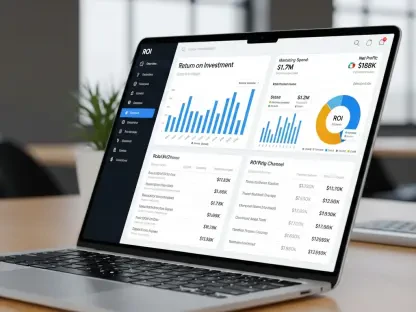In today’s dynamic retail environment, technology plays a crucial role in optimizing operations and enhancing customer experiences. Zainab Hussain, an e-commerce strategist with expertise in customer engagement and operations management, joins us to discuss NearbyOne and its innovative approach to retail infrastructure.
Can you give an overview of NearbyOne and its primary objectives?
NearbyOne is an edge orchestration platform designed to help retailers optimize their hardware systems by leveraging a software-driven approach. Its primary objective is to enable retailers to analyze their existing infrastructure and make informed decisions about hardware investments, ensuring these are only made where truly necessary.
How does NearbyOne differentiate itself from other edge orchestration solutions in the market?
NearbyOne sets itself apart by focusing on a software-centric model that emphasizes initial software assessments to identify performance needs. Unlike other solutions that may prioritize broad hardware deployments, NearbyOne uses real-time data analysis to recommend targeted upgrades, thus optimizing costs and improving efficiency.
What are some of the common challenges retailers face with hardware upgrades and infrastructure management?
Retailers often struggle with the high costs and complexity of extensive hardware upgrades. They also face difficulties managing diverse hardware environments across multiple locations, leading to inefficiencies and potential overspending.
How does the overemphasis on hardware deployment negatively impact retailers?
Overemphasis on hardware can lead to unnecessary expenditures and financial strain, as retailers may end up purchasing and deploying equipment that isn’t needed in all locations. This can divert resources from other critical areas of the business and reduce overall operational efficiency.
Could you explain what a software-centric approach to retail technology infrastructure entails?
A software-centric approach involves using software to analyze and optimize existing hardware systems. This method focuses on understanding specific performance needs and making data-driven recommendations for targeted hardware upgrades, rather than broad, blanket deployments.
How does this approach help in identifying specific performance needs within a retail operation?
By conducting an initial software assessment, this approach allows retailers to collect and analyze data on system performance. This detailed analysis helps pinpoint areas where hardware enhancements are genuinely needed, enabling more precise and cost-effective upgrades.
How does NearbyOne conduct the initial software assessment of existing systems?
NearbyOne starts with a comprehensive evaluation of current systems using software tools that monitor and analyze performance metrics. This assessment identifies bottlenecks, inefficiencies, and areas for optimization across multiple locations.
What are the key factors taken into consideration during this evaluation?
Key factors include system performance data, hardware utilization rates, peak traffic times, and specific location needs. This data-driven analysis ensures any recommended upgrades are justified and targeted.
How does your platform determine which locations need hardware upgrades?
The platform uses real-time data analysis to identify locations with performance issues or higher demands during peak times. By isolating these areas, NearbyOne can target hardware improvements where they’ll have the most significant impact.
Can you share an example of how NearbyOne has helped a retailer optimize hardware investments efficiently?
A large retail chain experiencing slowdowns during peak hours used NearbyOne to assess their infrastructure. The platform identified that only high-traffic stores needed upgrades. By focusing on these specific locations, the retailer avoided a costly system-wide refresh and improved performance where it was most needed.
How does NearbyOne’s edge orchestration platform use centralized management?
The platform offers centralized management by providing an overall view of both old and new infrastructure. This unified control simplifies the oversight of diverse hardware environments, facilitating seamless integration and efficient management across all locations.
What advantages does centralized management offer retailers in terms of flexibility and efficiency?
Centralized management allows for streamlined operations, reducing the complexity of managing multiple systems. It enhances flexibility by making it easier to implement changes and updates across the network, while also improving efficiency through better resource allocation.
How does NearbyOne help retailers reduce costs in the long run?
NearbyOne helps retailers minimize unnecessary hardware expenditures by focusing on targeted upgrades based on actual performance needs. This approach ensures that investments in hardware are strategic and value-driven, leading to better ROI and cost savings over time.
What makes your platform a scalable solution for retailers with evolving business needs?
The platform’s ability to integrate and manage both existing and new hardware makes it highly scalable. Retailers can adapt their infrastructure in response to changing business demands without undertaking large-scale replacements, ensuring continuous growth and flexibility.
Can you provide case studies or examples of retailers who have successfully implemented NearbyOne’s solutions?
One example is a quick-service restaurant chain that used NearbyOne’s software assessment to identify and address performance issues at specific high-traffic locations. As a result, they saw a significant reduction in wait times and improved customer satisfaction.
What tangible benefits did these retailers experience after adopting your platform?
Retailers benefited from enhanced performance during peak periods, reduced operational costs, and improved overall efficiency. The targeted hardware upgrades ensured that resources were allocated effectively, maximizing the impact of their investments.
What are the future plans or upcoming features for NearbyOne?
We plan to introduce advanced AI-driven analytics and further enhance the platform’s integration capabilities. This will improve predictive maintenance and offer even more precise recommendations for hardware upgrades, helping retailers stay ahead of technological advancements.
How do you see the role of edge orchestration in the retail industry evolving over the next few years?
Edge orchestration will become increasingly vital as retailers seek to enhance their agility and responsiveness. The ability to manage and optimize infrastructure effectively will be key to maintaining competitive advantage and meeting evolving customer expectations.
What can attendees expect from your demo at the Retail Technology Show 2025?
Attendees can look forward to an interactive demo showcasing how NearbyOne’s platform analyzes and optimizes retail infrastructure. We’ll demonstrate real-world applications and offer insights into how our solutions can drive performance improvements.
How can interested retailers book a demo with NearbyOne at the event?
Retailers can visit our booth R57, or they can schedule an appointment through our website. We’re excited to connect with industry professionals and discuss how our solutions can benefit their operations.
Do you have any final advice for retailers looking to optimize their hardware and infrastructure investments?
My advice is to focus on understanding the specific needs and performance metrics of your operations before committing to hardware upgrades. Consider solutions like NearbyOne that offer data-driven insights to ensure every investment is strategic and impactful. Connect with us to learn more about how we can support your infrastructure optimization efforts.









